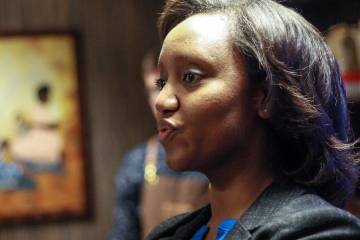A huge untapped potential for air transport development in Africa continues to go unrealized as infrastructure constraints, high costs, lack of connectivity, regulatory impediments, slow adoption of global standards, and skills shortages affect African airlines’ viability. As a result, from 2020 to 2022, the continent’s carriers suffered cumulative losses of $3.5 billion and the International Air Transport Association (IATA) projects losses of $213 million this year.
Solutions remain difficult to implement given the failure of governments to sufficiently collaborate on raising Africa’s standards of governance, for example. Still, IATA sees fertile ground for progress given that Africa accounts for 18 percent of the global population, yet only 2.1 percent of the world’s air transport activity.
“The intent here for us is to focus on all the foundations needed in the aviation industry in Africa to achieve the ultimate goal, which is the Single African Air Transport Market (SAATM),” said Kamil Al Awadhi, IATA regional vice president for Africa and the Middle East, during a Monday briefing to announce the launch of the association’s Focus Africa initiative. “But before we get to SAATM, we need to look at, first of all, the infrastructure issues and the foundations in the aviation industry…So, we’re trying to connect all the aspects of the aviation industry in this, rather than just focusing on one element and ignoring the other. I think that’s the biggest difference right now [from previous efforts].
Focus Africa involves six areas of concentration, namely safety, infrastructure, connectivity, finance and distribution, sustainability, and future skills. Airlines and governments need to address all areas before they can realize the ultimate goal of creating a single transport market, added Al Awadhi. One particularly stubborn problem remains the issue of $1.6 billion in blocked sales funds. IATA‘s member airlines incur unnecessary costs when they cannot freely repatriate their overseas sales funds. Typically, such costs occur when airlines’ funds sit idle in foreign bank accounts as a result of foreign exchange shortages or regulatory obstacles put in place by certain governments.
Nigeria accounts for roughly half of the receipts blocked by African countries, said Al Awadhi.
“They’ve had reelections, they have a new government that just started a couple of months ago, and they have a new central bank governor,” he explained. “So we engaged with them right now to see if we can have a solution to reduce this. But in the end, we are facing issues where countries are playing tit-for-tat—if you don’t pay my airline, I will not pay your airline, and so forth. And it could escalate to a point where the aviation industry in those two countries become damaged.”
While blocked funds have drawn a lot of attention, particularly from the airlines whose sales receipts remain with African banks, the more systemic problems covered by IATA’s six pillars continue to hamper air transport development on the continent. The goal lies with the implementation of SAATM, but the agreement hasn’t come into full force since its official launch in 2018 as some African governments such as Uganda and some smaller airlines say it would lead to few big airlines dominating the market. About 35 countries accounting for some 80 percent of the aviation market in Africa have become signatories, but what IATA calls SAATM’s operationalization remains elusive.
“The issue’s not only signing but actually implementing [SAATM],” remarked Yvonne Makolo, CEO of RwandAir and first female chair of the IATA board of governors. “We’ve had a challenge with some countries from a protectionist perspective that want to protect the national carriers and are unwilling to fully implement SAATM, but we believe that this is the only way we are really going to realize the full potential of aviation in the continent… We need to move away from the highly restrictive, bilateral air service agreements that we’re operating on right now and it’s not only opening up the skies but also opening up the borders. This goes with also the restrictive visa regimes in different African countries, which also restricts movement of people and goods between countries.”


